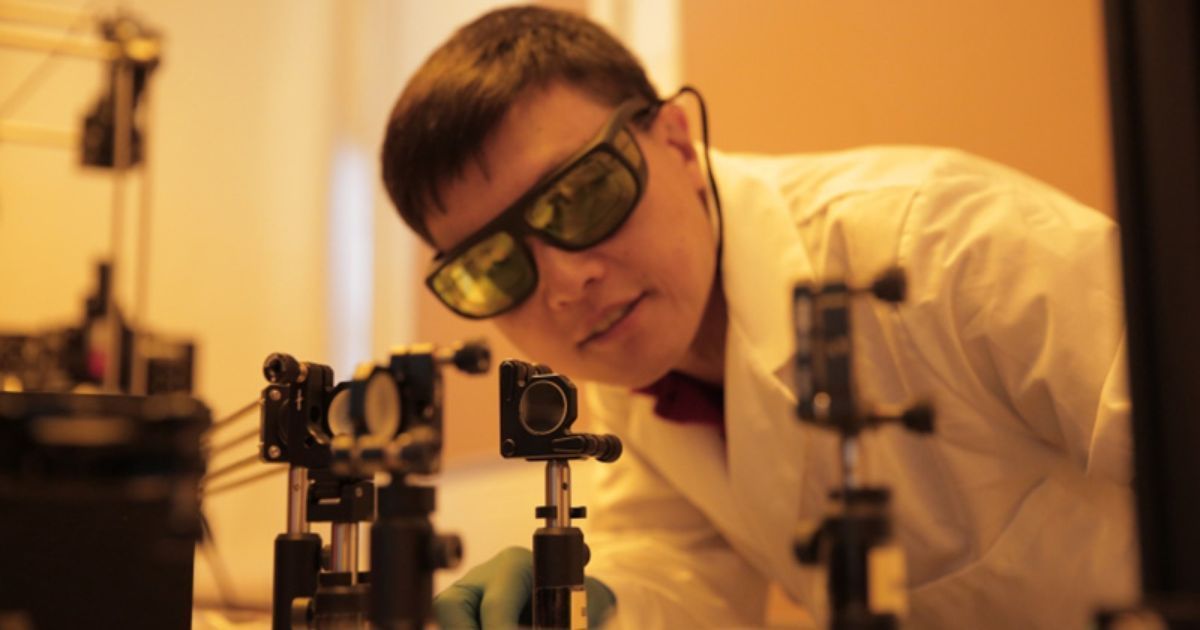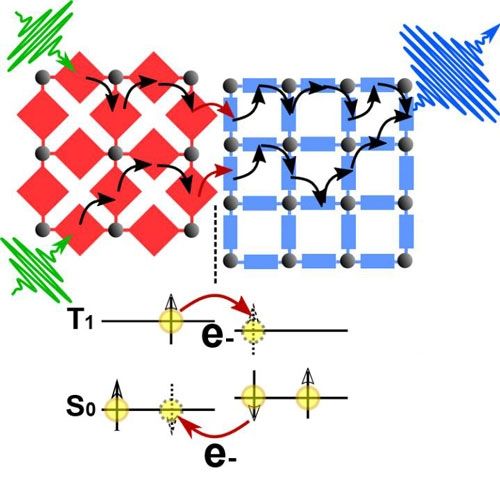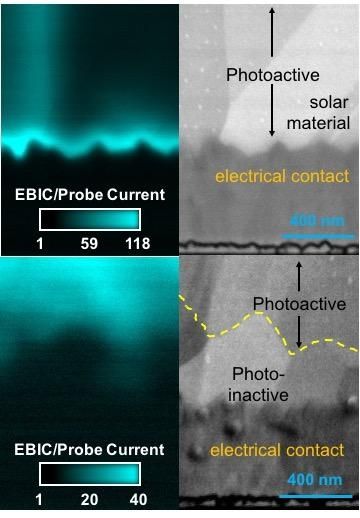Scientist looks to tap the sun to power adjustable contact lenses, other medical devices.



The upconversion of photons allows for a more efficient use of light: Two photons are converted into a single photon having higher energy. Researchers at KIT now showed for the first time that the inner interfaces between surface-mounted metal-organic frameworks (SURMOFs) are suited perfectly for this purpose — they turned green light blue. The result, which is now being published in Advanced Materials (“Photon Upconversion at Crystalline Organic–Organic Heterojunctions”), opens up new opportunities for optoelectronic applications such as solar cells or LEDs.
Photon upconversion: energy transfer between the molecules is based on electron exchange (Dexter electron transfer). (Image: Michael Oldenburg)
In the blackland prairie of Texas, an ocean is thousands of miles away. But Benjamin Blumenthal, co-founder and chief executive officer of SunToWater Technologies, says we’re all standing under the sixth ocean — the one that’s above our heads.
The Carrollton startup makes an appliance that unlocks that water supply. The company’s water generators — each about the size of a central air conditioning unit — use air, salt and solar power to produce gallons of drinkable water. They could bring water to rural communities without a municipal water supply, regions stricken by drought or developing countries with water contamination.
But the company will target a higher-end market first: Homeowners with large lawns to water and swimming pools to fill. Blumenthal said SunToWater is focusing on customers in California and Texas, two states that have coped with an unpredictable, and often limited, water supply and the water restrictions and high utility bills that come with it.

The often-maligned E. coli bacteria has powerhouse potential: in the lab, it has the ability to crank out fuels, pharmaceuticals and other useful products at a rapid rate. A research team has discovered a new way to remove a major stumbling block in the process, and boost biofuel production from E. coli.


Click on photo to start video.
Porsche concept electric Mission E car.
Here’s the stunning electric car Porsche is making to take on Tesla.


Magine a future in which hyper-efficient solar panels provide renewable sources of energy, improved water filters quickly remove toxins from drinking water, and the air is scrubbed clean of pollution and greenhouse gases. That could become a reality with the right molecules and materials.
Scientists from Harvard and Google have taken a major step toward making the search for those molecules easier, demonstrating for the first time that a quantum computer could be used to model the electron interactions in a complex molecule. The work is described in a new paper published in the journal Physical Review X by Professor Alán Aspuru-Guzik from the Department of Chemistry and Chemical Biology and several co-authors.
“There are a number of applications that a quantum computer would be useful for: cryptography, machine learning, and certain number-theory problems,” Aspuru-Guzik said. “But one that has always been mentioned, even from the first conceptions of a quantum computer, was to use it to simulate matter. In this case, we use it to simulate chemistry.”
We don’t recommend playing “Pokémon GO” while driving, but we have to admit this Tesla hack is cool in theory.

Nice and Kudos to ORNL.
A team led by Jonathan Poplawsky of the Center for Nanophase Materials Sciences used advanced microscopy techniques to discover efficiency differences of crystalline structures of various mixtures of cadmium, tellurium and selenium. In fact, selenium is an integral part of the formulation that resulted in a world record for solar cell efficiency. The team’s paper is published in Nature Communications.
While some of today’s solar cells use a blend of cadmium and tellurium to convert light into electricity, adding the optimum amount of selenium in the right places could help increase efficiency from the current mark of about 22 percent to levels approaching the theoretical limit of 30–33 percent. The trick is to determine the best ratio of selenium.
“Using different microscopy methods, we were able to gain a better understanding of the phases, compositions and crystalline structures that allow these materials to convert light into electricity more efficiently,” said Poplawsky, adding that the availability of data is limited. “In some instances, adding too much selenium changes the crystalline structure of cadmium-tellurium and dramatically reduces the conversion efficiency.”